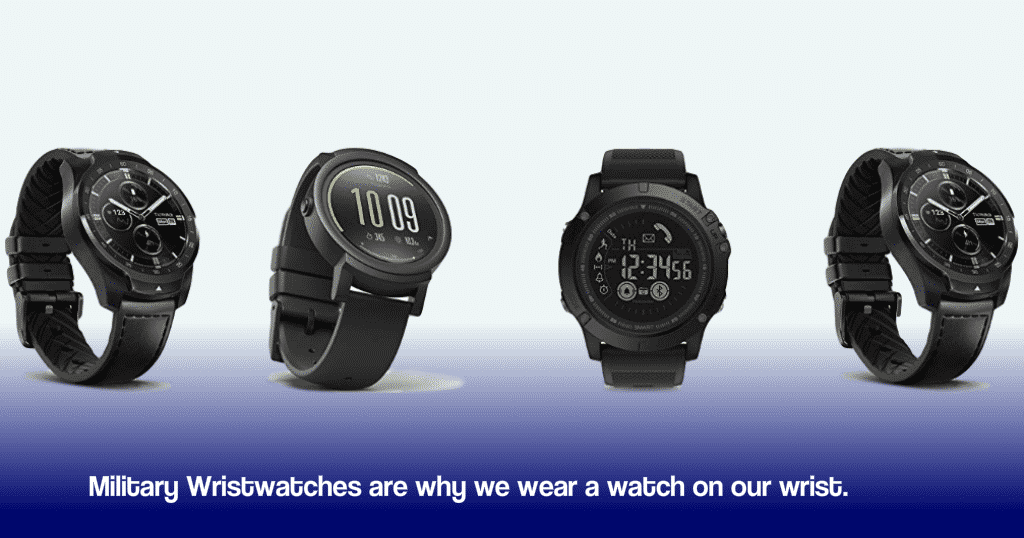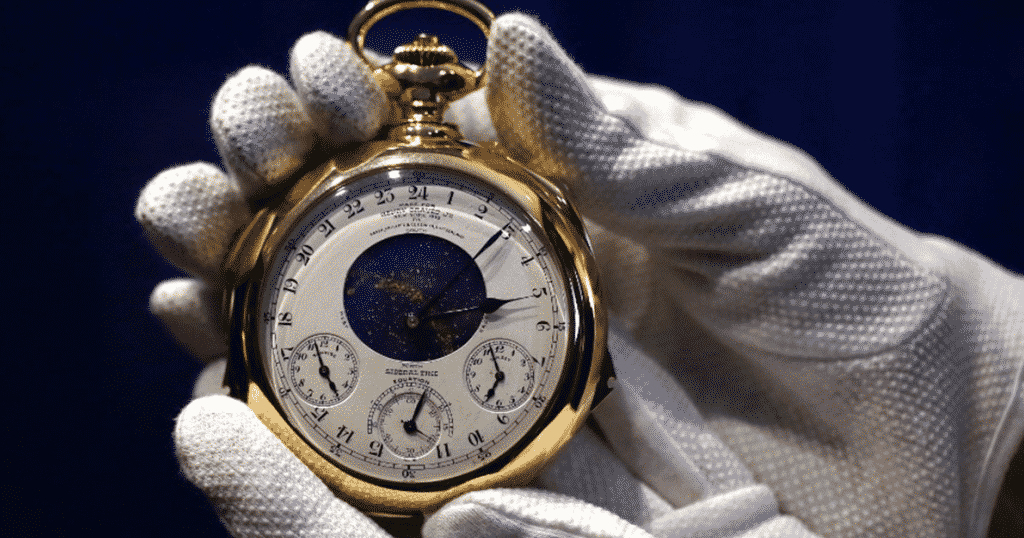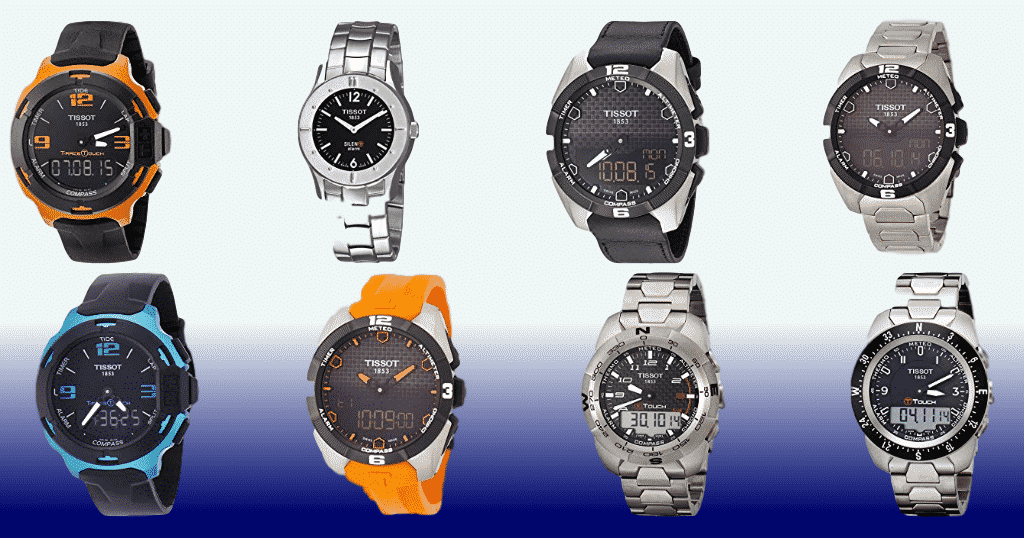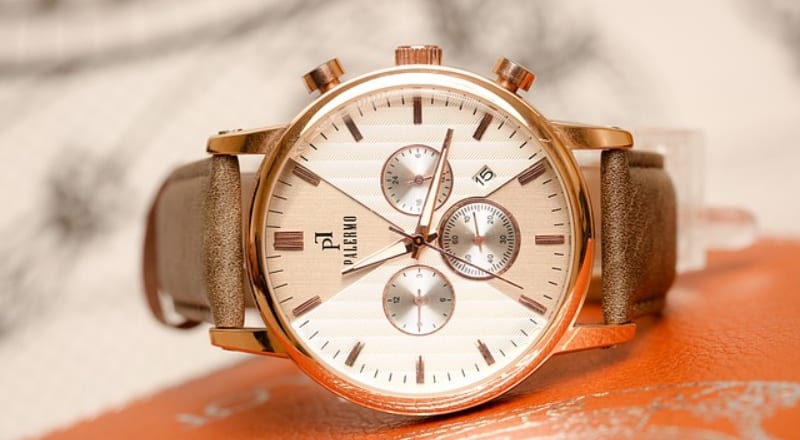There is a school of thought that the military wristwatches got their name from a German military request for a soldier in a watch-house. The watchhouse is known to us today as a guard tower.

Another story explains that the military wristwatches came into use because a German naval officer wanted to know the time but could not pull out a pocket watch. The reason then implied that both of the soldier’s hands were busy operating the machine.
Wristwatches are popular as confirmed by over 1,900 Amazon customer reviews who bought a wristwatch.
Another story is that Wilhelm I placed an application at a Berlin trade show. Then, later seen in World War I, original wristwatches were small-sized pocket watches with metal lugs soldered on so that a fabric strap could hold the small watch to a wrist. However, these new wristwatches saw their first action in the Boer War.
Some of these watches had no cover over the watch crystal, and some of them had a metal cover, while some had pieces of the cover cut so that the watch could be seen without opening the lid.
Get The Full Buzz On Military wristwatches.
Did You Know collecting military wristwatches can be fascinating?

A watch is a timepiece intended to be worn or carried around by a person. The clock is designed to keep working despite the motions caused by the person’s activities.
The wristwatch is designed to be worn around the hand’s wrist, attached by a strap or other type of bracelet. A pocket watch is so designed that it carries the pocket of a person.
The progress of Watches in the 17th century from spring-powered clocks, which emerged early in the 14th century throughout the most significant part of the watch’s history, was a mechanical device driven by clockwork. The clock keeps time by the winding of a mainspring equipped with an oscillating wheel which is well balanced.
Back in the nineties, the electronic quartz watch was invented, powered by a battery, and kept time with a vibrating quartz crystal. As the progress of the observation developed in the 1980s, the quartz watch had taken over most of the market from the mechanical clock.
History will show that the evolution of the quartz revolution started in the 1980s. By 2010 the watch developed era by quartz included smartwatches known as complex computer-like electronic devices designed to be worn on a person’s wrist. These computer-like gargets generally include timekeeping functions but are only a tiny subset of the smartwatch’s abilities.
Not all modern watches are big and not all vintage watches were small
The modern watches are seen in use nowadays always display the date, the month and year also which day it is. As for the mechanical watches, various extra features called “complications,” such as moon-phase displays and the different types of the tourbillon, are often added to the device.

The big difference between mechanical and digital watches developed by quartz watches is the features technology made possible. These features include time-related options such as timers, clocks, and alarm functions.
Also seen in some modern smartwatches are calculators, GPS, and Bluetooth technology. And a significant feature is heart-rate monitoring capabilities, and some of them use radio clock technology to correct the time regularly.
As technology continues to develop, most watches in the watch marketplace are not too expensive and are used mainly for timekeeping; all have quartz movements. However, the high-cost collectible watches are valued more for their intricate glamorous, craftsmanship, and aesthetic appeal design.
Also, these expensive collectible watches are more than just for simple timekeeping. Besides, they often have traditional mechanical changes, even though they are less accurate and more expensive than electronic ones.
As the watch evolution was investigated, it came to light that back in November 2018, the most expensive watch ever sold at auction was a Patek Philippe Henry Graves Supercomplication watch. That watch is described as the most important watch in the world, And take note, it’s a mechanical pocket watch, reaching a final price of 24 million US dollars in Geneva on November 11th, 2014.

Long before pocket-sized multimedia devices became human bolt-ons, the essential tool was the wristwatch. Itandrsquo’s enduring practicality and visual appeal have seen it continue to thrive as, variously: a piece of jewelry, a lifestyle accessory; an essential tool; a personal statement, and a desirable must-have.
Historically, the watch evolved from nature-dependent devices such as water clocks and sundials, which existed in ancient Greece and Rome, if not before. Then in the 1400s spring, powered clocks were developed, and two hundred years later, these were adapted to be pocket watches. It was not really until the twentieth century that miniaturization made wristwatches possible.
There are two types of watches; those with mechanical movement and those with automatic movement. Mechanical watches are the direct descendant of the original clock. Strictly speaking, they are less reliable, they can be sensitive to temperature, and mechanical components can be sensitive to wear and tear. But the beauty and precision are still beautiful to watch buyers.
A reminder that the electronic watch has no moving parts. It just uses the electrical technology of the quartz crystal. These crystals emit a highly steady electronic pulse beat, so calm that you could set your watch by it. And yes, that is how electronic watches remain so accurate. They have small batteries to power the devices and move the hands around the watch face.
Modern watches can have different types of tourbillion, displays, chronographs, timers and alarm functions
The common aspect here is the technical innovations within each of these methods. And this includes the incorporation of the radio time signal. Electronic quartz watches will periodically synchronize the time; presumably, an atomic clock positioned somewhere else on the planet, remotely, thousands of miles away.
Bear in mind that there are two forms of display on a watch. Now, analog, i.e., a face and hands, and digital, i.e., numerical readout through a liquid crystal display (LCD). Many electronic watches will feature both interface types on a single observation, and mechanical watches can have small digital readouts embedded within them.
A watch exceeds a handheld computer because the watch is more robust than a mobile phone. And even more portable and smaller, enabling it to operate in extreme and specialist conditions. In terms so functions on watches, the devices have now started to compete with the mobile phone to be portable computers and multimedia devices.
Specific observations such as the Technomarine Abyss Watch ABS05 will be water-resistant up to 12,000meters. It is fairly common for quality watch companies such as Tag Heuer to make watches with water protection of up to 300 meters and almost standard for a watch to be water-resistant to 100m.
Other advanced watches such as the Tissot T-Touch have a collection of features presenting an overall performance mix. The Tissot T-Touch watch features a compass, an altimeter, a barometer, a thermometer, and water resistance up to 100 meters. All of which extend the watch’s functionality, making it ideal for active sportspeople.

Microcomputing innovations have brought a full range of functions to the watch. Already there are watch-phones to add to USB watches, MP3 players, audio recorders, MP4 video players, and others. However, observations remain timing devices and lifestyle statements and accessories virtually. Some of the most innovative watches are the sports performance monitor watches such as the Polar Activity Watch AW200.








